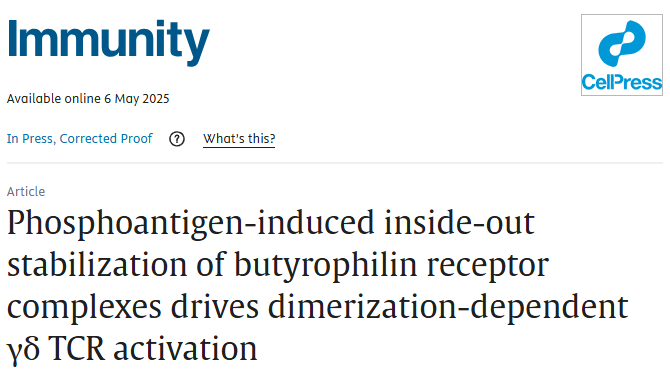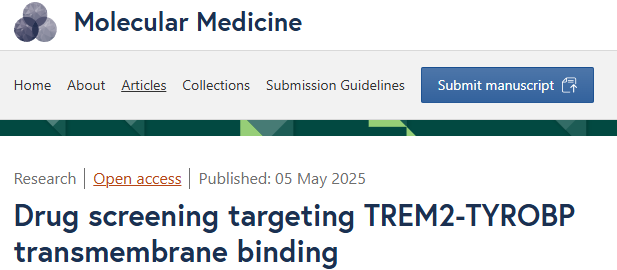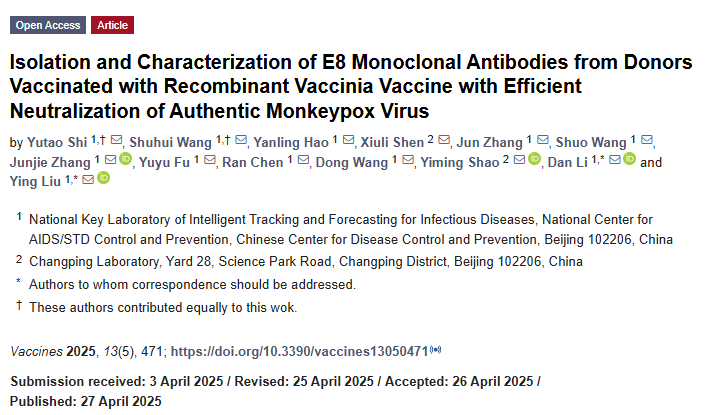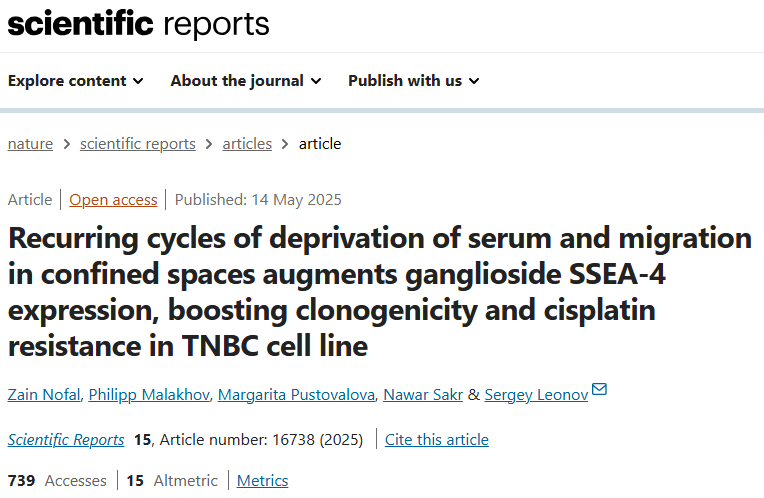Antibodysystem’s Research Tools Garner Renewed Recognition in Leading Scientific Journals
Throughout May, Antibodysystem’s technological expertise received further validation through citations in premier scientific journals including Immunity, Nature Cancer, and Developmental Cell, and total impact factor: 80+. Our products facilitated critical research across diverse domains such as the molecular mechanisms of phosphoantigen sensing by γδ T cells for immune activation, cardiotoxicity pathways of chemotherapeutic agents, neurological disorders linked to Motopsin gene defects, isolation of monkeypox virus-neutralizing monoclonal antibodies (mAbs), advances in cancer immunotherapy, high-throughput drug screening platforms, and studies on thrombosis pathogenesis. We are honored to support researchers in unraveling biological complexities and scaling new scientific heights. Moving forward, we reaffirm our commitment to empowering the scientific community with premium reagents and tools, steadfastly enabling breakthroughs in fundamental life science research.
Join us today as we highlight key publications citing AntibodySystem products this month. Let's discuss the findings with Dr. Connie and exchange insights!
1
Impact Factor: 25.5

|
Title |
Phosphoantigen-induced inside-out stabilization of butyrophilin receptor complexes drives dimerization-dependent γδ TCR activation |
|
Journal Information |
Immunity. (Available online 6 May 2025) |
|
Cited products |
|
|
Catalog |
Product Name |
|
Anti-Human CD277/BTN3A1 Antibody (103.2#) |
|
Abstract:
Phosphoantigens (pAgs), produced by infected or cancer cells, trigger the assembly of a membrane receptor complex comprising butyrophilin (BTN) members BTN3A1 and BTN2A1, leading to the activation of γδ T cells. BTN3A2 or BTN3A3 forms heteromers with BTN3A1, exhibiting higher γδ T cell receptor (TCR)-stimulating activity than BTN3A1 homomers. Cryoelectron microscopy (cryo-EM) structure reveals a pAg-induced BTN2A1-BTN3A1 heterotetramer with a 2:2 stoichiometry, stabilized by interactions between the intracellular B30.2 domains and the extracellular immunoglobulin V (IgV) domains. BTN3A2 or BTN3A3 heterodimerizes with BTN3A1, forming a pAg-induced tetrameric complex with BTN2A1. However, BTN3A1 heterodimers are more stable than BTN3A1 homodimers in this interaction. Cryo-EM reveals that BTN2A1-BTN3A1-BTN3A2 binds two γδ TCR ectodomains, with one being sandwiched between the IgV domains of BTN2A1 and BTN3A2, while the other interacts with the free BTN2A1 IgV in the complex, as evidenced by functional data. Together, our findings uncover the mechanism of ligand-induced inside-out stabilization of BTN receptor complexes for dimeric activation of γδ TCR.
This study employed AntibodySystem's Anti-Human CD277/BTN3A1 Antibody (clone 103.2) to quantify BTN3A1 surface expression in transfected cells via flow cytometry and immunofluorescence. This essential QC step validates cellular models prior to functional experiments including T cell activation assays.
2
Impact Factor: 23.5

|
Title |
Cardiomyocyte-localized CCDC25 senses NET DNA to promote doxorubicin cardiotoxicity by activating autophagic flux |
|
Journal Information |
Nat Cancer. 2025 May 29. |
|
Cited products |
|
|
Catalog |
Product Name |
|
Mouse IgM, kappa Isotype Control Antibody (MM-30) |
|
Abstract:
Cardiotoxicity restricts the clinical use of anthracyclines. Although recent evidence indicates that aberrant activation of the cytosolic DNA-sensing pathway mediates cardiotoxicity, the function of extracellular DNA remains unclear. Here we observe a substantial increase in circulating neutrophil extracellular trap (NET) DNA in individuals with lymphoma experiencing cardiotoxicity after anthracycline-containing treatment. Using mouse models and human organotypic myocardial slices, we demonstrate that doxorubicin induces HMGB1-dependent cardiac NET formation, thereby promoting cardiac remodeling and dysfunction. Mechanistically, extracellular NET DNA is recognized by the transmembrane protein CCDC25 on cardiomyocytes, and their cross-talk generates reactive oxygen species and activates autophagic flux, subsequently impairing cardiac function. Targeting CCDC25 significantly alleviates anthracycline cardiotoxicity and synergizes with the antitumor efficacy of doxorubicin in lymphoma and breast cancer models. Overall, our findings demonstrate a previously unrecognized role of NETs and CCDC25 in anthracycline cardiotoxicity and suggest that targeting CCDC25 could provide a dual therapeutic and cardioprotective advantage.
This study employed AntibodySystem’s Mouse IgM, κ Isotype Control Antibody (MM-30) in cardiac tissue-neutrophil coculture systems to investigate the functional role of the alarmin HMGB1 in neutrophil extracellular trap (NET) formation.
3
Impact Factor: 10.7

|
Title |
Targeting VSIG4+ tissue-resident macrophages enhances T cell cytotoxicity and immunotherapy efficacy in cancer |
|
Journal Information |
Dev Cell. Published online: May 7, 2025 |
|
Cited products |
|
|
Catalog |
Product Name |
|
InVivoMAb Anti-Human VSIG4/CRIg Antibody (Iv0141) |
|
|
Research Grade Anti-Human IL11 Antibody (X203) |
|
Abstract:
Tissue-resident macrophage (TRM) is crucial for organ development and homeostasis. However, the role of TRM-derived tumor-associated macrophage (TAM) subpopulations in cancer remains unclear. Using single-cell RNA sequencing and lineage tracing, we reported a TRM-derived TAM subpopulation, characterized by VSIG4 overexpression in testicular cancer. Macroscopically, such subpopulation was also found in tumors such as hepatocellular carcinoma, lung cancer, and glioblastoma. It was associated with poor prognosis and the suppression of CD8+ T-cell-dependent immunity via VSIG4. Notably, VSIG4 promoted immunosuppressive effects through direct or indirect modes, including interacting with receptors on CD8+ T cells or inducing transcription of IL-11 in TAMs. More importantly, MEF2C was identified as a key transcription factor that maintained VSIG4 expression and determined the biological behaviors of VSIG4+ TAMs. In preclinical models, targeting VSIG4+ TAMs via VSIG4 or MEF2C demonstrated a favorable effect of enhancing the efficacy of immune checkpoint inhibitors.
This study employed AntibodySystem's InVivoMAb Anti-Human VSIG4/CRIg Antibody (Iv0141) to characterize distribution and expression of VSIG4+ tissue-resident macrophages (TRM) across multiple tumor types via immunofluorescence staining and flow cytometry. Complementary experiments utilized Research Grade Anti-Human IL11 Antibody (X203) for cytokine neutralization to investigate IL-11's functional contribution to VSIG4+ macrophage-mediated immunosuppression.
4
Impact Factor: 6

|
Title |
Drug screening targeting TREM2-TYROBP transmembrane binding |
|
Journal Information |
Mol Med. 2025 May 5;31(1):171 |
|
Cited products |
|
|
Catalog |
Product Name |
|
Research Grade Anti-Human TREM2 Antibody (al002) |
|
Abstract:
TREM2 encodes a microglial membrane receptor involved in the disease-associated microglia (DAM) phenotype whose activation requires the transmembrane interaction with TYROBP. Mutations in TREM2 represent a high-impact risk factor for Alzheimer's disease (AD) which turned TREM2 into a significant drug target. We present a bacterial two-hybrid (B2H) system designed for high-throughput screening of modulators for the TREM2-TYROBP transmembrane interaction. In a pilot study, 315 FDA-approved drugs were analyzed to identify potential binding modifiers. Our pipeline includes multiple filtering steps to ensure candidate specificity. The screening suggested two potential candidates that were finally assayed in the human microglial cell line HMC3. Upon stimulation with anti-TREM2 mAb, pSYK/SYK ratios were calculated in the presence of the candidates. As a result, we found that varenicline, a smoking cessation medication, can be considered as a transmembrane agonist of the TREM2-TYROBP interaction.
This study employed AntibodySystem’s Research Grade Anti-Human TREM2 Antibody (al002) for antibody-mediated cellular stimulation, enabling functional assessment of candidate therapeutics on TREM2-TYROBP signaling interactions.
5
Impact Factor: 5.3

|
Title |
Amyloid neuropathy, tauopathy, decreased cholinergic and dopaminergic neurons, long-term memory and motor deficits, and sleep disturbance in motopsin deficient mice |
|
Journal Information |
Geroscience. 2025 May 23. |
|
Cited products |
|
|
Catalog |
Product Name |
|
RHC82412 |
Anti-Human Phospho-Tau (pS202/pT205) Antibody (AT8) |
Abstract:
Truncating mutation in motopsin (neurotrypsin/PRSS12) gene causes an autosomal recessive non-syndromic intellectual disability. Since motopsin cleaves agrin, motopsin deficiency causes accumulation of long form agrin. Agrin binds amyloid β (Aβ) and accelerates Aβ fibril formation in Alzheimer’s disease (AD). Down’s syndrome (DS) exhibits AD-like neuropathological changes. Agrin also contributes to Parkinson’s disease (PD). Degeneration of cholinergic neurons is relevant to AD, whereas degeneration of dopaminergic neurons causes PD and PD-associated cognitive impairment and dementia. Although there is a functional relationship between agrin and amyloidosis, it has not been clear whether motopsin deficiency induces amyloid neuropathy or not. Here, motopsin knock-out (KO) mice increased hippocampal amyloid and phosphorylated tau deposits. Agrin and amyloid oligomers were colocalized in the amyloid angiopathy. Motopsin KO mice also exhibited motor deficits. Motopsin KO male mice decreased cholinergic neurons in the vertical limb of the diagonal band of Broca and dopaminergic neurons in the substantia nigra compacta and the ventral tegmental area, and showed long-term memory deficits for object recognition, hypoactivity, and shorter sleeping time. Motopsin KO female mice decreased cholinergic neurons in the medial septum and showed hyperactivity. The results suggest that this intellectual disability is produced by a complex mechanism relating to AD, DS, PD, PD-associated cognitive impairment, and cerebrovascular dementia. The results also suggest that motopsin KO mouse can be a novel animal model for these diseases. Development of therapeutics, that reduce amyloid and phosphorylated tau deposits and protect cholinergic and dopaminergic neurons, will be useful to prevent the progress of this disease.
This study performed immunohistochemical (IHC) analysis using AntibodySystem's Anti-Human Phospho-Tau (pS202/pT205) Antibody (AT8) to assess p-tau deposition in murine hippocampal regions. This approach enabled investigation of motopsin (PSPN) deficiency on tau pathological progression.
6
Impact Factor: 5.2

|
Title |
Isolation and Characterization of E8 Monoclonal Antibodies from Donors Vaccinated with Recombinant Vaccinia Vaccine with Efficient Neutralization of Authentic Monkeypox Virus |
|
Journal Information |
Vaccines (Basel) 2025 May; 13(5): 471. |
|
Cited products |
|
|
Catalog |
Product Name |
|
Recombinant VACV D8L Protein, N-His |
|
Abstract:
Background/Objectives: Monkeypox, twice declared a public health emergency of international concern by the WHO, currently lacks approved targeted therapeutics. This study focused on the development of monkeypox virus (MPXV) E8-specific human monoclonal antibodies (mAbs) derived from recipients of the recombinant vaccinia vaccine (rTV), with subsequent evaluation of their cross-neutralizing activity against orthopoxviruses, including the vaccinia virus (VACV) and MPXV. Methods: Three mAbs (C5, C9, and F8) were isolated from rTV vaccinees. Structural mapping characterized their binding domains on the MPXV E8 and VACV D8 proteins. Neutralization potency was assessed against the VACV TianTan strain and MPXV clade IIb. A combo was further evaluated in a VACV-infected mice model for clinical recovery and viral load reduction. Complement-dependent enhancement mechanisms were also investigated in vitro. Results: C9 targets the virion surface region of E8 and both the virion surface region and intravirion region of D8, showing cross-neutralization activity against the MPXV (IC50 = 3.0 μg/mL) and VACV (IC50 = 51.1 ng/mL) in vitro. All three antibodies demonstrated potent neutralization against the VACV in vitro: C5 (IC50 = 3.9 ng/mL), C9 (IC50 = 51.1 ng/mL), and F8 (IC50 = 101.1 ng/mL). Notably, complement enhanced neutralization against the VACV by >50-fold, although no enhancement was observed for the MPXV. In vivo administration accelerated clinical recovery by 24 h and achieved significant viral clearance (0.9-log reduction). Conclusions: E8-targeting mAbs exhibited broad-spectrum neutralization against orthopoxviruses, demonstrating therapeutic potential against both historical (VACV) and emerging (MPXV) pathogens. However, MPXV’s resistance to complement-dependent enhancement highlights the necessity for pathogen-adapted optimization. These findings establish E8 as a critical conserved target for pan-poxvirus VACV and MPXV countermeasure development.
This study employed AntibodySystem's Recombinant VACV D8L Protein, N-His in ELISA assays to detect monoclonal antibody binding activity against the VACV D8 protein, with subsequent analysis of antibody cross-reactivity and affinity.
7
Impact Factor: 3.8

|
Title |
Recurring cycles of deprivation of serum and migration in confined spaces augments ganglioside SSEA-4 expression, boosting clonogenicity and cisplatin resistance in TNBC cell line |
|
Journal Information |
Sci Rep. 2025 May 14;15(1):16738. |
|
Cited products |
|
|
Catalog |
Product Name |
|
Anti-Human CD133/PROM1 Antibody (SAA0050), PE |
|
Abstract:
The remarkable biophysical properties of metastatic migrating cells, such as their exceptional motility and deformability, enable them to migrate through physical confinements created by neighboring cells or extracellular matrix. This study explores the adaptive responses of breast cancer (BC) cell sublines derived from the highly aggressive, metastatic triple-negative MDA-MB-231 and the non-metastatic MCF7 human BC cell lines, after undergoing three rounds of confined migration (CM) stress. Our findings demonstrate that CM elicits common and cell-type specific adaptive responses in BC cell sublines. In particular, both cell sublines exhibit a similar enhancement of clonogenicity and nanoparticle (NP) uptake activity, indicating tumorigenic potential. We have, for the first time, shown that stimulation with CM induces a hybrid epithelial-to-mesenchymal transition (EMT) phenotype of MDA-MB-231 cells. This transition is characterized by a significant rise in the expression of stage-specific embryonic antigen-4 (SSEA4), alongside a substantial decline in the population of CD133+ cells and a marked reduction in Ki67 expression in the MDA-MB-231-derived subline following Cis-Platin treatment. These changes are likely associated with heightened resistance of this subline to cisplatin. In contrast, CM induces far fewer such alterations in the MCF7-derived counterpart with a notable increase of CD133+ population, which seems to be insufficient to change cell susceptibility to cisplatin exposure. This study contributes to our understanding of the adaptive mechanisms underlying metastasis and drug resistance in breast cancer, emphasizing the need for personalized approaches in cancer treatment that consider the heterogeneous responses of different cancer subtypes to environmental stresses.
This study employed AntibodySystem's PE-conjugated Anti-Human CD133/PROM1 Antibody (SAA0050) for flow cytometric quantification of cancer stem cell marker CD133 expression in breast cancer cell lines (MDA-MB-231 and MCF7) and their confined migration (CM) sublines, determining CM-induced alterations in stemness traits.
8
Impact Factor: 2.6

|
Title |
Endoplasmic reticulum protein 29 negatively regulates platelet functions and thrombosis in mice |
|
Journal Information |
Thromb J. 2025 May 7;23:44. |
|
Cited products |
|
|
Catalog |
Product Name |
|
Anti-Human Fibrin Antibody (59D8) |
|
Abstract:
Several members of protein disulfide isomerase (PDI) family with the CXYC active motif such as PDI, ERp57, ERp72, ERp46, ERp5 and TMX1 have important roles in platelet functions and thrombosis. These members contribute to the network of redox regulation of platelet activities. However, whether other PDI family members without the CXYC motif such as ERp29, have a role in these processes remains unknown. To determine the role of ERp29 in platelet functions and thrombosis. The phenotypes of platelet-specific ERp29-deficient (Pf4-Cre/ERp29fl/fl) mice were evaluated using tail bleeding assay and laser-induced and FeCl3-induced arterial injury models, as well as venous thrombosis model. In vitro, the functions of ERp29-deficient platelets were assessed in respect to aggregation, adhesion, spreading, clot retraction, granule secretion and integrin αIIbβ3 activation measured by flow cytometry. Redox state of integrin αIIbβ3 thiols was detected using 3-(N-maleimido-propionyl) biotin (MPB) labeling. Compared with WT mice, Pf4-Cre/ERp29fl/fl mice exhibited shortened tail-bleeding times, increased platelet accumulation in the two arterial thrombosis models, and enhanced thrombogenesis in the venous thrombosis model. ERp29-deficient platelets had enhanced response in aggregation, ATP release, spreading, clot retraction, αIIbβ3 activation, fibrinogen binding and P-selectin expression. As detected by MPB labeling, the free thiol content of integrin αIIbβ3 in ERp29-deficient platelets were increased compared with WT platelets, suggesting that the role of ERp29 is associated with oxidation of the functional disulfides of integrin αIIb and/or β3 subunits. ERp29 is the first disulfide isomerase without the CXYC motif that negatively regulates platelet function. This study provides new insight into the redox network controlling thrombosis.
This study employed AntibodySystem's Anti-Human Fibrin Antibody (59D8) in murine in vivo experiments to detect fibrin deposition within laser-induced arterial thrombosis models, enabling mechanistic analysis of ERp29 deficiency impacts on fibrin generation during thrombus formation.
